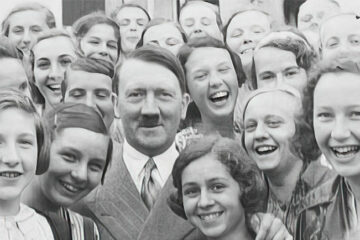Martha Stewart: Why Is She Hated?
A review of Chistopher Byron’s Martha, Inc.: The Incredible Story of Martha Stewart Living Omnimedia (New York: John Wiley, 2002)
by John I. Johnson
CHRISTOPHER Byron’s criticism of a Martha Stewart column ironically provides an apt description of his book Martha, Inc.: “At once whining and angry, pathetic and imperious,” “rambling from point to point almost incoherently” while reciting “a litany of criticisms and ho-hum complaints.”
Nearly every celebrity, politician, or businessman could be skewered the way Byron and the rest of the media routinely skewer Martha Stewart. So why is Martha so often singled out for abuse?
Opinion molders viscerally dislike Stewart because she projects a confirmatory vision of gentility and the WASP lifestyle while unapologetically telling American women that traditional forms of femininity and family-oriented domesticity are “good things.” More irksome still, her message resonates with millions of viewers, listeners and readers.
As a consequence, journalists like Byron feel a relentless pressure to disauthenticate Martha Stewart — to drive a wedge between the woman and the loyal audience she attracts.
Ideologically-driven journalism is necessarily highly biased, as the following admission against interest attests: “None of Martha’s friends, neighbors, or acquaintances from her childhood and teenage years in Nutley [New Jersey] had anything unkind to say of Martha at all. Most described her with words like ‘nice,’ ‘focused,’ ‘a good student,’ ‘really hard working,’ and ‘smart.’ Many professed bewilderment and genuine anger at press profiles that portrayed her as a shrew and a witch.” Her former next-door neighbor said, “If you want negative comments about Martha Stewart, you’ve come to the wrong place. She was a wonderful person. That’s all I’ll say.” “It was the same on Wall Street. ‘I’m not going to say anything negative about Martha,’ said her brokerage firm boss, Andy Moness. ‘She was the hardest working, most competent person I ever worked with.’”
Although the media’s — and Byron’s — caricature of Martha Stewart as a witch sans pareil thus bears little relationship to reality, judging from his and others’ accounts, she is much like any other major celebrity. She is not always a nice person.
Since Martha powerfully affirms the WASP lifestyle, one might mistakenly assume that she is herself a proud and self-conscious WASP. In fact, she is a middle-class Polish Catholic from Nutley, New Jersey. Even her ex-husband, Andy Stewart (via whom she shed her maiden name, Kostyra) is not a WASP, but a Jew. Many of her friends and business associates are also Jews.
Likewise, the hated values she champions do not stem from political or ideological conviction, for she is apparently apolitical. Byron reports that in the 1970s a friend was astonished to learn that Martha was completely unaware of Watergate — the top news story of the day. She is a friend of the Clintons, but her relationship with them appears to be more social than political. And while embodying the feminist ideal of the she-man who trounces men in business competition (according to Byron), her most deeply rooted values are obviously not feminist.

It therefore appears that the triumphant rise and spread of the Martha Stewart doctrine was something of a social fluke. Through some unintentional oversight on the part of the powers that be, Martha fortuitously slipped through a crack in the monolithic wall of political correctness that rigidly orders our lives. Because she was politically and racially “correct” (i.e., incorrect), the standard ideological filters designed to preclude the rise of a phenomenon such as herself failed to detect, and so could not stop her. This explains the need to attack and disauthenticate her now, after she has assumed the iconic status of an influential role model emulated by millions.
Still, one cannot help but wonder what sort of inner instinct motivated this beautiful, determined, and exceptionally talented woman to so fiercely embrace such improbable, unfashionable, and (to the Establishment) loathsome values as femininity, domesticity, and the WASP lifestyle. What is the ultimate source of the “mesmerizing vision” that has “energized her whole life?” (It was certainly not, as Byron sniggeringly proposes, Nancy Drew.) And why were “women everywhere” equally “mesmerized” by the allure of “femininity, domestic arts, and home life”? How did Martha Stewart usurp the role of her most savage critics — anti-White feminists and other assorted ideologues — and bestow upon millions of women “the freedom to be themselves”?
The refusal to explore serious issues of this sort constitutes the core deficiency of the book. The hidden spiritual wellspring that so radically sets Martha Stewart at odds with the prevailing Zeitgeist, that is ultimately responsible for her fame and success, remains as enigmatic and elusive after we finish Byron’s account as it was before we began.
Unfortunately, the author harbors such deep scorn for his subject — and her audience — that he is unwilling to condescend sufficiently to seriously engage her, or the values she so consistently and tenaciously champions. He simply isn’t interested.
His flip and contemptuous description of Stewart’s colleague Susan Magrino is typical: “Like Martha and Sharon Patrick [another Stewart executive], she was a blonde with a freshly-scrubbed white-bread look.” Elsewhere he describes Martha as the “Queen of White-Bread Living.” (Though trite, “white-bread” and “fly-over America” are two of Byron’s favorite slurs.)
So instead of a thoughtful and nuanced portrait of a strong willed, fiercely independent if paradoxically ladylike radical social visionary, we are once again spoon-fed the thin propaganda gruel of the familiar two-dimensional cartoon bitch woodenly portrayed on TV’s moronic Saturday Night Live.
The true Martha Stewart, meanwhile, remains as shrouded in mystery as ever.
* * *
Source: Author







[Byron] describes Martha as the “Queen of White-Bread Living.”
—
Ha! That’s a good one. Married to a Jew and now making merry with Snoop Doggie.